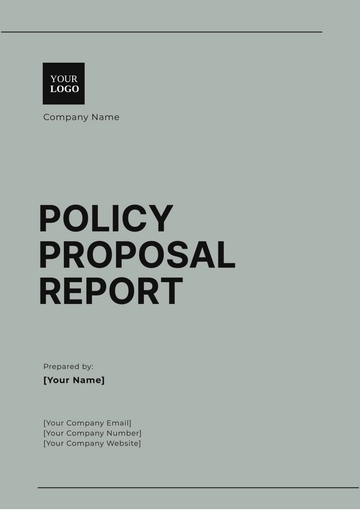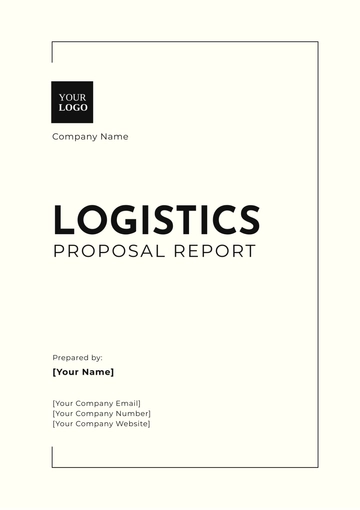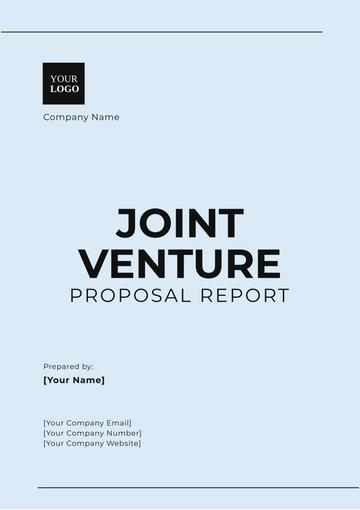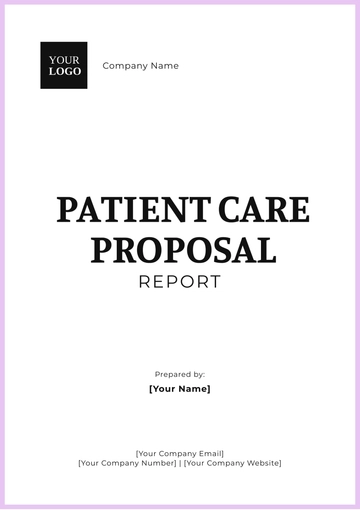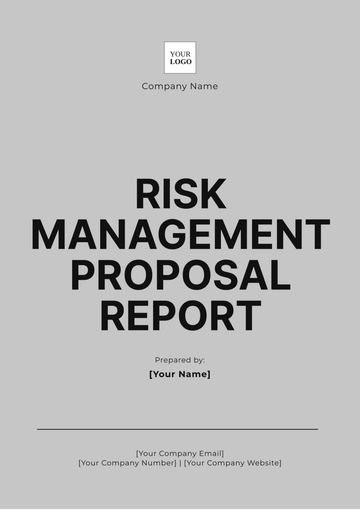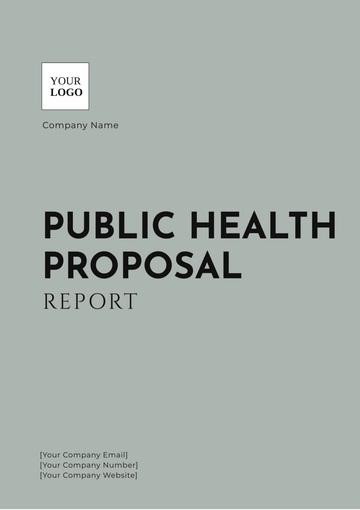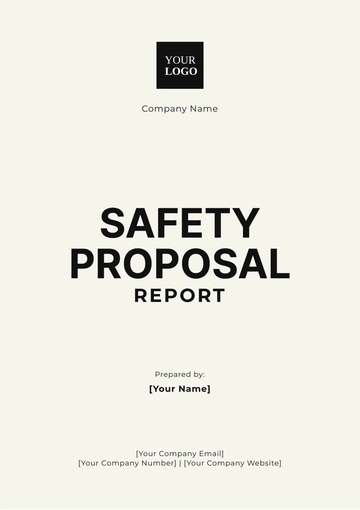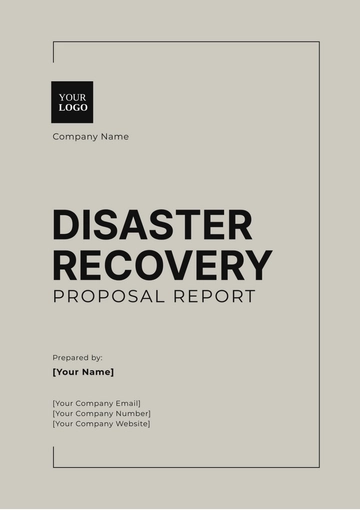Free Safety Proposal Report
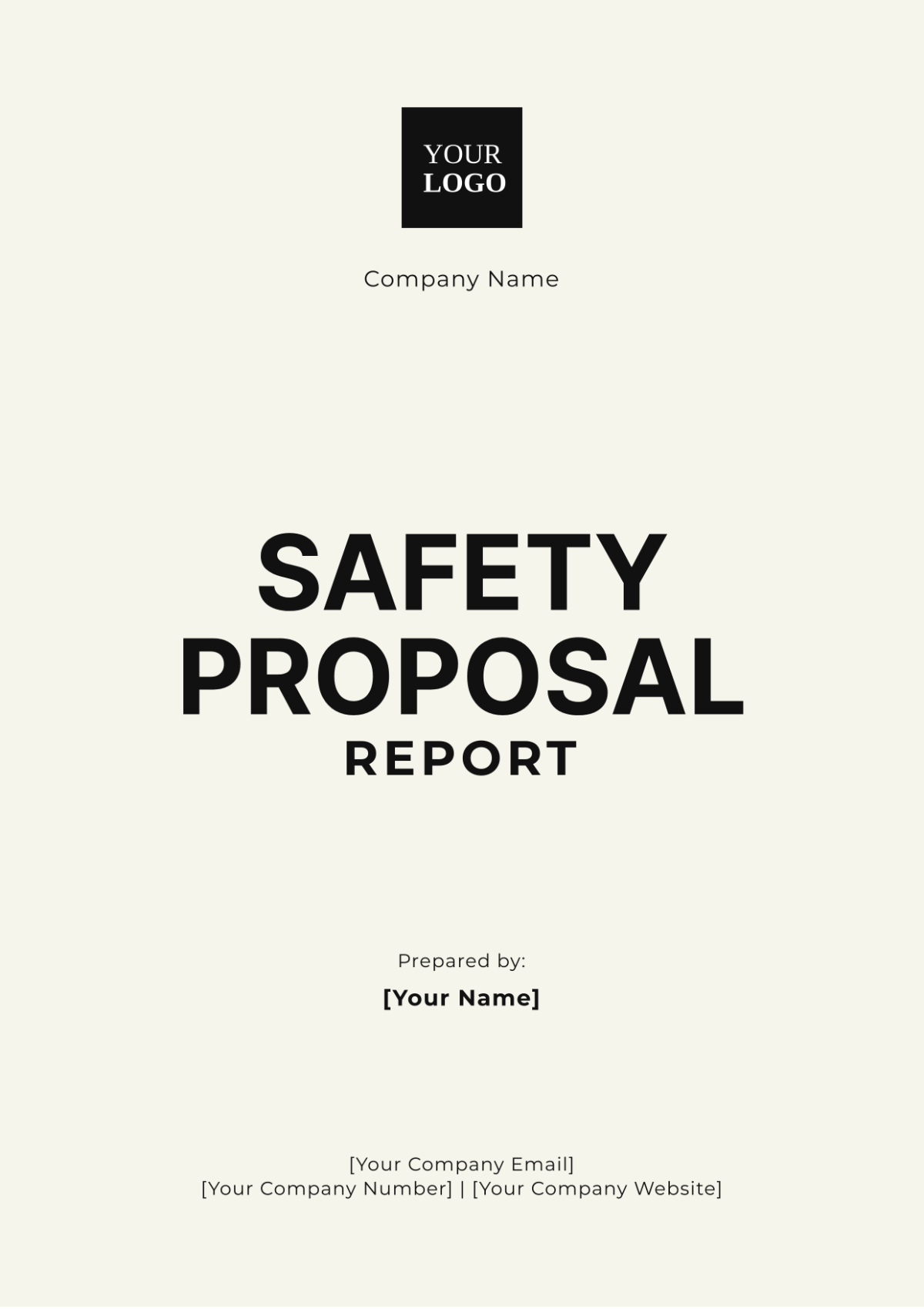
1. Executive Summary
This Safety Proposal Report outlines the recommended safety measures and protocols designed to address potential hazards or risks within [Your Company Name]. The objective is to ensure that all safety guidelines are strictly followed to minimize the risk of accidents and enhance overall safety for all personnel involved.
2. Introduction
Ensuring a safe working environment is paramount to the success of any project. This report details the potential hazards identified, and risk assessment findings, and outlines the safety measures and protocols recommended to mitigate those risks. The goal is to establish a culture of safety that prioritizes the health and well-being of every individual working within the specified environment.
3. Risk Assessment
3.1 Identified Hazards
The following potential hazards have been identified within the specific environment or project:
Slippery surfaces
Falling objects
Electrical hazards
Machine-related injuries
Exposure to harmful substances
Fire risk
3.2 Risk Evaluation
The risk associated with each identified hazard has been evaluated based on the likelihood of occurrence and the potential severity of consequences. The evaluation matrix is presented below:
Hazard | Likelihood | Severity | Risk Level | Priority Level |
|---|---|---|---|---|
Slippery surfaces | High | Moderate | Medium | High |
Falling objects | Moderate | High | High | High |
Electrical hazards | Low | Severe | Medium | Medium |
Machine-related injuries | High | High | High | High |
Exposure to harmful substances | Low | Moderate | Low | Low |
Fire risk | Low | Severe | High | High |
4. Recommended Safety Measures
4.1 Slippery Surfaces
To mitigate risks associated with slippery surfaces:
Install anti-slip mats in high-risk areas.
Ensure regular cleaning and maintenance to prevent the accumulation of water or other slippery substances.
Display warning signs in areas prone to slip hazards.
4.2 Falling Objects
To reduce the risk of injuries from falling objects:
Utilize secure shelving and storage systems with barriers.
Implement policies requiring the use of personal protective equipment such as hard hats in designated areas.
Conduct regular inspections to ensure proper storage practices are followed.
4.3 Electrical Hazards
To address electrical hazards:
Ensure all electrical equipment is properly grounded and maintained.
Conduct regular safety audits of electrical systems.
Provide training for staff on electrical safety protocols and emergency procedures.
4.4 Machine-related Injuries
To mitigate risks associated with machinery:
Implement strict lockout/tagout procedures during maintenance.
Ensure all machinery is equipped with appropriate safety guards and emergency stop buttons.
Provide comprehensive training for operators on safe machinery usage and emergency response.
4.5 Exposure to Harmful Substances
To minimize exposure to harmful substances:
Utilize proper ventilation systems to reduce airborne contaminants.
Provide personal protective equipment such as gloves, masks, and goggles.
Ensure the availability of Material Safety Data Sheets (MSDS) for all chemicals used in the workplace.
4.6 Fire Risk
To mitigate fire risks:
Install and regularly inspect fire detection and suppression systems.
Conduct regular fire drills and ensure clear evacuation routes.
Store flammable materials in designated areas with proper labeling.
5. Training and Awareness
Ensuring that all personnel are adequately trained and aware of the safety protocols is crucial. The following measures are recommended:
Conduct regular safety training sessions and refresher courses.
Distribute safety manuals and guidelines to all employees.
Display safety posters and warning signs prominently throughout the workplace.
6. Emergency Response Plan
6.1 Emergency Contact Information
Ensure that up-to-date emergency contact information is available and easily accessible:
Contact | Phone Number |
|---|---|
Fire Department | [Contact Number] |
Medical Emergency Services | [Contact Number] |
Facility Security | [Contact Number] |
Safety Manager | [Contact Number] |
6.2 Evacuation Procedures
Clear and concise evacuation procedures should be established and communicated to all employees:
Identify primary and secondary evacuation routes.
Ensure all exits are marked and unobstructed.
Conduct regular evacuation drills to ensure preparedness.
7. Conclusion
By implementing the safety measures and protocols outlined in this report, we can significantly reduce the risk of accidents and injuries within the specified environment or project. Ongoing training, regular risk assessments, and a commitment to safety will ensure that we provide a secure and healthy working environment for all personnel.
- 100% Customizable, free editor
- Access 1 Million+ Templates, photo’s & graphics
- Download or share as a template
- Click and replace photos, graphics, text, backgrounds
- Resize, crop, AI write & more
- Access advanced editor
Enhance workplace safety with Template.net's Safety Proposal Report Template. This editable and customizable template allows you to create a comprehensive safety proposal tailored to your organization's specific needs. Easily outline safety protocols, risk assessments, and preventive measures. Perfect for ensuring compliance and promoting a safe working environment. Streamline your safety documentation process with this user-friendly and professional template, designed to meet all your safety reporting requirements.
You may also like
- Business Proposal
- Research Proposal
- Proposal Request
- Project Proposal
- Grant Proposal
- Photography Proposal
- Job Proposal
- Budget Proposal
- Marketing Proposal
- Branding Proposal
- Advertising Proposal
- Sales Proposal
- Startup Proposal
- Event Proposal
- Creative Proposal
- Restaurant Proposal
- Blank Proposal
- One Page Proposal
- Proposal Report
- IT Proposal
- Non Profit Proposal
- Training Proposal
- Construction Proposal
- School Proposal
- Cleaning Proposal
- Contract Proposal
- HR Proposal
- Travel Agency Proposal
- Small Business Proposal
- Investment Proposal
- Bid Proposal
- Retail Business Proposal
- Sponsorship Proposal
- Academic Proposal
- Partnership Proposal
- Work Proposal
- Agency Proposal
- University Proposal
- Accounting Proposal
- Real Estate Proposal
- Hotel Proposal
- Product Proposal
- Advertising Agency Proposal
- Development Proposal
- Loan Proposal
- Website Proposal
- Nursing Home Proposal
- Financial Proposal
- Salon Proposal
- Freelancer Proposal
- Funding Proposal
- Work from Home Proposal
- Company Proposal
- Consulting Proposal
- Educational Proposal
- Construction Bid Proposal
- Interior Design Proposal
- New Product Proposal
- Sports Proposal
- Corporate Proposal
- Food Proposal
- Property Proposal
- Maintenance Proposal
- Purchase Proposal
- Rental Proposal
- Recruitment Proposal
- Social Media Proposal
- Travel Proposal
- Trip Proposal
- Software Proposal
- Conference Proposal
- Graphic Design Proposal
- Law Firm Proposal
- Medical Proposal
- Music Proposal
- Pricing Proposal
- SEO Proposal
- Strategy Proposal
- Technical Proposal
- Coaching Proposal
- Ecommerce Proposal
- Fundraising Proposal
- Landscaping Proposal
- Charity Proposal
- Contractor Proposal
- Exhibition Proposal
- Art Proposal
- Mobile Proposal
- Equipment Proposal
- Student Proposal
- Engineering Proposal
- Business Proposal








